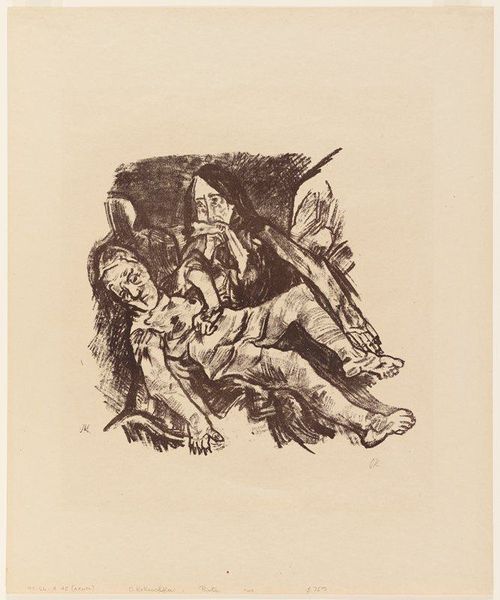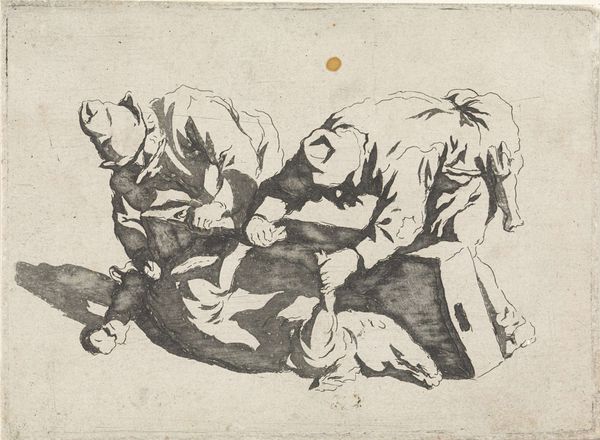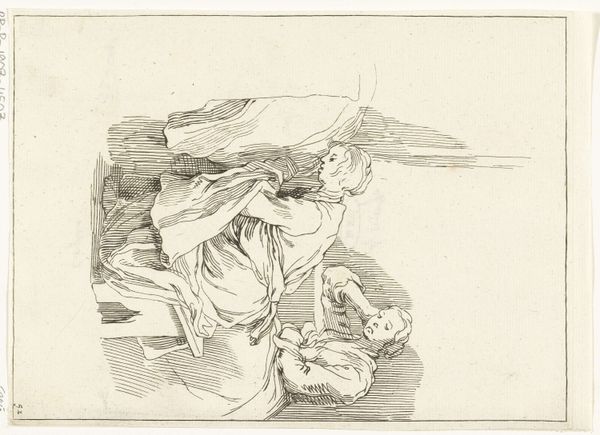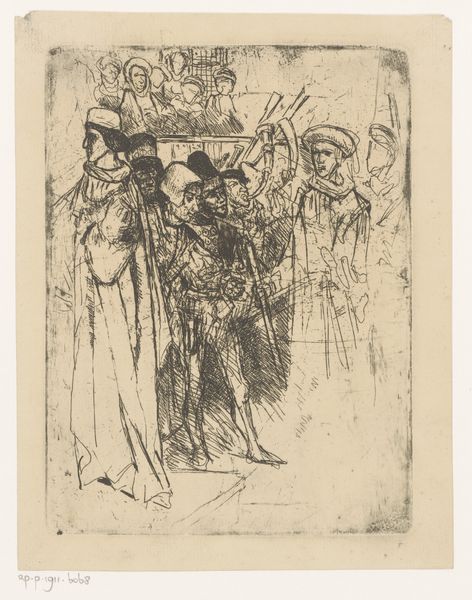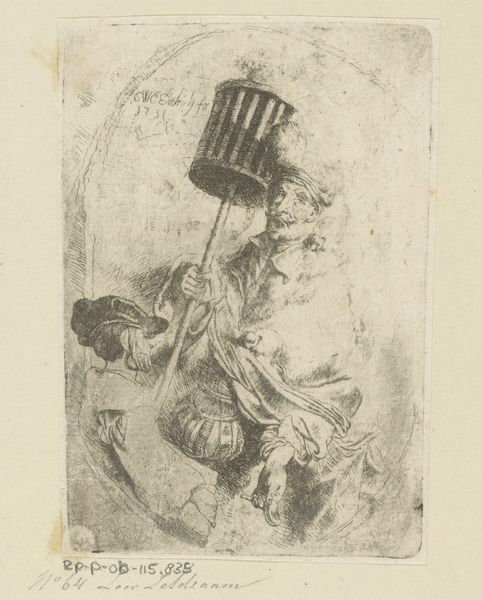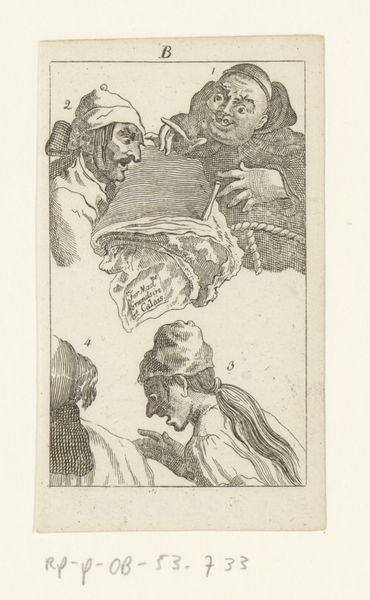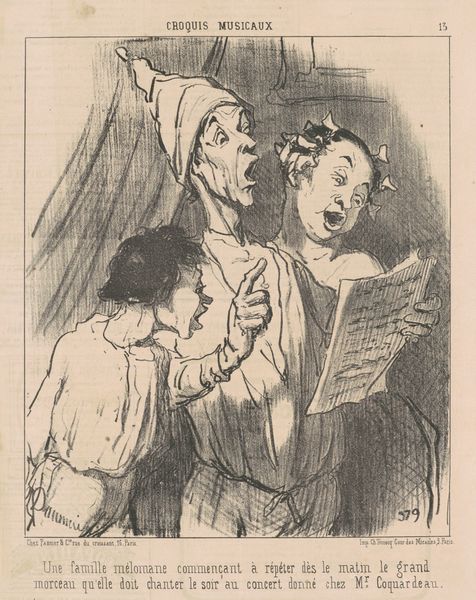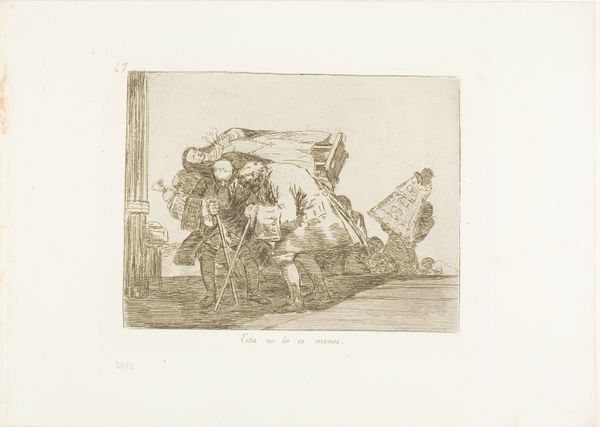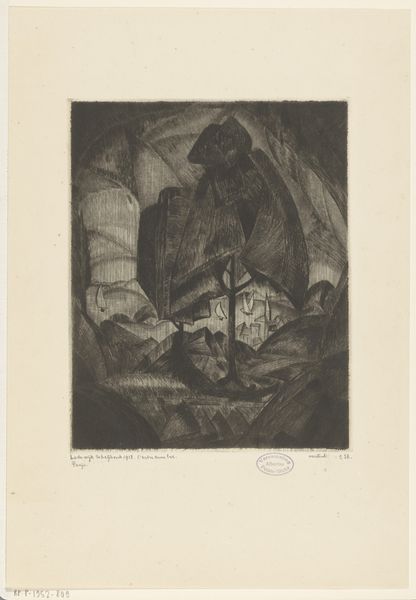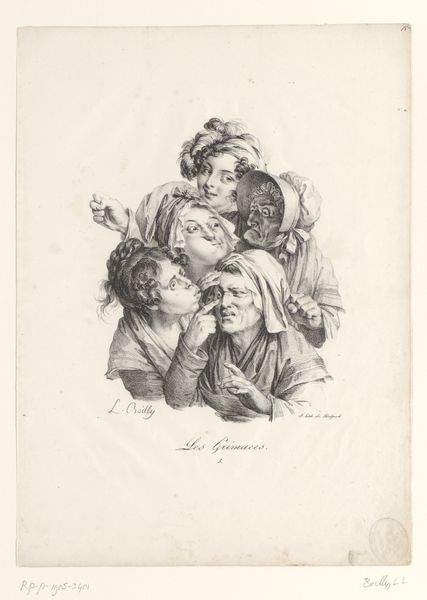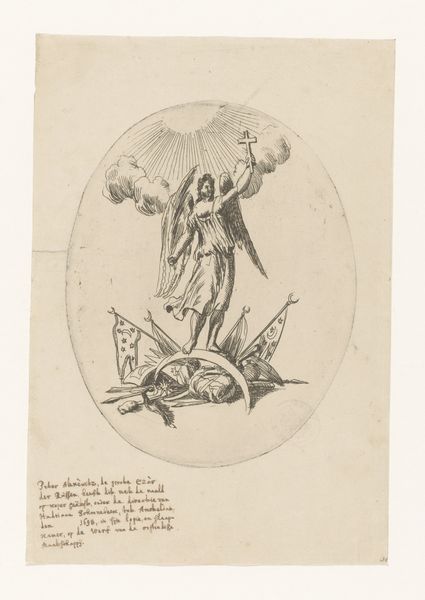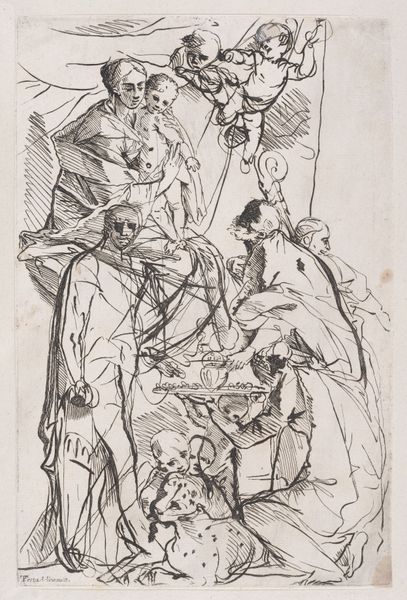
The Evening of the National Holiday. It never fails... you go out to see the fireworks, and all you get is waterworks!, plate 20 from Les Beaux Jours De La Vie Possibly 1844
0:00
0:00
Dimensions: 225 × 224 mm (image); 361 × 248 mm (sheet, folded)
Copyright: Public Domain
Editor: This lithograph by Honoré Daumier, possibly from 1844, is titled "The Evening of the National Holiday. It never fails... you go out to see the fireworks, and all you get is waterworks!" The mood is far from celebratory! Everyone looks miserable in what I assume is the rain. What social commentary do you see in this piece? Curator: Daumier's genius lies in revealing the everyday struggles beneath the veneer of bourgeois life. The title itself drips with irony, doesn’t it? National holidays are supposed to be unifying, joyous occasions, yet Daumier presents a picture of discomfort and perhaps disillusionment. Look at their faces – the grim determination of the mother, the burdened slump of the father carrying his child; there's a weight here, isn’t there? Editor: Yes, they appear burdened and, dare I say, resentful? Curator: Precisely! Consider the socio-political climate of France in the 1840s. There was a widening gap between the promises of the Republic and the lived realities of the working class. The "fireworks," symbolic of national pride and progress, are overshadowed by the "waterworks"—the harsh realities of poverty and hardship. This image, a piece from *Les Beaux Jours de la Vie* (The Good Times of Life), can be read as a subtle critique of the state, of its failure to deliver on its promises. It asks us to confront who *really* benefits from national celebrations, and who is left out in the cold. Do you think the choice of lithography contributes to this critique? Editor: I do. The medium, which allows for mass production, democratizes the art, making it accessible to a wider audience, and amplifying the message. I also find the overt, if exaggerated, humanity powerful and emotive. Curator: Absolutely. The seeming ease of lithography belies the power of its reach and its role in shaping public consciousness, much like this supposed day of celebration is upended. Editor: It makes me think about who a holiday is really for. Curator: Exactly. Art can act as a mirror, reflecting back the contradictions and inequalities of our own societies.
Comments
No comments
Be the first to comment and join the conversation on the ultimate creative platform.

